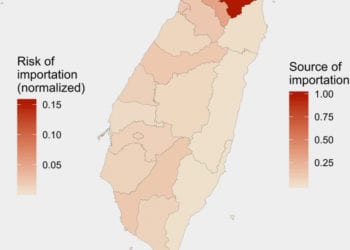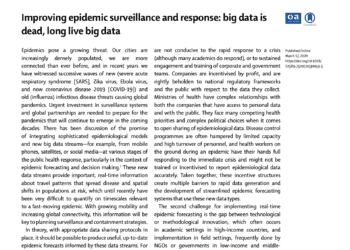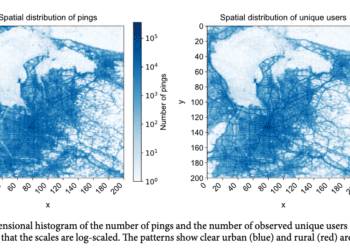While Taiwan effectively managed many aspects of the COVID-19 pandemic, it still confronted significant challenges. From January 2020 to December 2022, Taiwan registered 8,872,955 cases and 15,253 deaths, underscoring the substantial public health issues it faced during the pandemic.
In early 2020, officials quickly set up the Central Epidemic Command Center to manage pandemic resources and policies. Taiwan, like many nations, adopted measures such as universal mask-wearing, increased mask production, and stressed hand hygiene. They also used digital tech and big data, set border controls, quarantined the infected, and restricted travel and gatherings, highlighting their effective response to the pandemic.
Even as cases of COVID-19 have decreased in recent months, the threat of infectious disease outbreaks still looms large in the country. Continuous vigilance, preparedness, and adapting to new data and methodologies remain crucial for Taiwan to maintain its exemplary health response.
CrisisReady held a workshop at National Taiwan University with public health researchers, academics, and government officials to discuss using new data sources in public health. Human mobility data, as one example, has been useful in tracking population movement during health emergencies, helping predict disease spread. The workshop emphasized the need for data-driven approaches to enhance preparedness and response to health challenges.
Goals of the Workshop
- Understand key mobility indicators and their collection challenges, and examine methods to access real-time mobility data during infectious disease outbreaks.
- Discuss how mobility data supports decision making, especially in the context of creating epidemic prevention policies.
- Examine global use cases of mobility data in disease control, and the challenges and opportunities that arose from these endeavors.
- Delve into the specifics of data collection and its uses and examine how telecom data is used by public sectors.
- Identify how mobility data can be used to design practical epidemic prevention methods.
- Analyze population movement patterns in Taipei City and examine its role in early warnings for communities.
Public Health Response in Taiwan: An Overview
Taiwan’s proactive measures in response to the COVID-19 pandemic garnered global recognition and, in many regards, positioned it as a leading example in managing the crisis. Considered an international ‘Gold Standard’ in infectious disease control, Taiwan implemented multifaceted strategies that effectively combined traditional epidemiological approaches with novel data sources and advanced analytic methods.
One notable initiative was the launch of the ‘Taiwan Social Distancing App’, a mobile tracing technology designed to notify users about potential contact with infected individuals. The app maintained a registry of nearby devices and sent alerts if any of those devices later reported an infection.
Taiwan also leveraged its vast national health insurance database, merging it with immigration and customs information to generate comprehensive data for real-time analytics. This integration facilitated instant alerts during clinical visits by correlating a patient’s travel history and symptoms, significantly enhancing case identification.
New technological measures were also employed, such as QR code scanning and online platforms, enabling travelers to report their travel histories and health symptoms. Based on this data, the system could then assess travelers’ infection risks considering their recent travel activities within a 14-day frame.
COVID-19 vaccination uptake was — and remains — high in Taiwan. Reports from the Taiwan Centers for Disease Control published on October 21, 2022 indicated that 93.81% of the Taiwanese population has received at least one vaccine dose, 88.14% two doses, 73.73% three doses, 14.23% four doses, and 1.1% had completed all five doses. Additionally, 0.8% of immunocompromised individuals had been given a weakened booster. Of those over 12, 93.96% had the first booster, while 41.4% of those over 65 had received the second booster.
More recently, as of February 23, 2023, Taiwan’s Central Epidemic Command Center (CECC) reported that 94% of the population had been administered at least one dose of the COVID-19 vaccine. Furthermore, 76.3% had received a booster shot, while 23% had been given a third dose. This information was sourced from Focus Taiwan.
Despite these successes, the threat of public health emergencies, especially infectious disease outbreaks, remains a major concern in Taiwan. The country’s experience with COVID-19 has highlighted the importance of preparedness and rapid response in managing such crises. As such, Taiwan continues to invest in its public health infrastructure and develop strategies to effectively respond to future public health emergencies.
The Use of Novel Data in Taiwan’s Response to Public Health Emergencies
During the COVID-19 pandemic, Taiwan effectively used aggregated and anonymized movement and colocation data to identify cities with higher risk of infection and regional importation. Using these data, a study in the BMC Public Health journal found that local movement influenced case numbers in Taiwan more, while movement between cities affected where outbreaks took place in the country. The study also found that the effectiveness of travel reductions depends on when and how long they’re in place.
Many other countries have used this kind of data from smartphones and social media platforms to understand how people’s movements affect disease spread. This information has proven effective in epidemiological modeling, resource planning, and medical interventions during health crises..
The use of human mobility data has played a significant role in Taiwan’s public health response efforts and continues to be a valuable tool in the prevention and management of disease outbreaks. However, as is true for most countries around the globe, there are key challenges and gaps in the use of these data that ought to be addressed to uncover its full potential.
Telecom Data in Infectious Disease Management
Telecommunications, especially human mobility data, have become pivotal in global public health strategies for managing infectious disease outbreaks. This anonymized and aggregated data offers insights into population movement patterns, which, as highlighted by the research above, are vital in understanding transmission dynamics and responding accordingly.
Another example of incorporating mobility data into public health research and response is the integration of this data into regional age- and risk-structured transmission models. This methodology allows policymakers to use aggregated and anonymized data to address the needs of the most at-risk populations and ultimately reduce the fatality risk from such crises.
Researchers from Stanford University, Tel Aviv University, and Vellore Institute of Technology in India found that aggregated, anonymized human mobility data improves predictions of new COVID-19 cases and the test positivity rate, and classifications of outbreak severity, beyond predictions made using only past health data. This highlights the value of telecom data in enhancing the accuracy of health predictions.
Utilizing Mobility Data in Public Health Responses
Below are some ways human mobility data have been used in public health responses around the world:
- Developing Spatial Data Infrastructures for Surveillance and Data Sharing:
Mobility data can be integrated into Geographic Information Systems & Technology (GIS&T) to develop spatial data infrastructures. These structures promote surveillance and data sharing, vital for monitoring disease spread. - Incorporating Mobility Data in Infectious Disease Forecasting:
Using mobility data in spatial epidemic models offers insights for epidemic preparedness and response. This aids in predicting disease spread and implementing preventive actions. - Using Geospatial Technologies for Digital Contact Tracing:
Geospatial technologies harness mobility data for digital contact tracing, a pivotal method in controlling disease spread. - Integrating Geographic Data in Disease Modeling:
Mobility data enhances disease modeling, aiding in grasping the progression of diseases and evaluating the effect of different interventions. - Investigating Geographic Social Vulnerabilities and Health Disparities:
Mobility data aids in studying geographic social vulnerabilities and health disparities, guiding public health strategies for fair healthcare access. - Communicating the Status of the Disease or Facilities for Return-to-Normal Operations:
Mobility data assists in relaying the current state of the disease or facility readiness for regular operations.
Conclusions and Key Takeaways
In the wake of rising concerns regarding disease outbreak response in Taiwan, understanding and leveraging mobility indicators has become increasingly important. As proven by several studies around the world, mobility data and novel methods of analysis play an important role in shaping effective, tailored public health responses. They provide a keen insight into population movement patterns, helping identify potential disease hotspots. Furthermore, they assist in tracing infections through travel history and underscore the increased risks associated with dense or crowded areas.
However, gathering mobility data and formulating relevant indicators is not without its challenges. The specter of privacy issues looms large, especially considering the importance of comprehensive data collection measures. The accuracy and reliability of data can be compromised when it’s self-reported or sourced from a multitude of platforms. There’s also the complex challenge of combining mobility data with other crucial pieces of information, such as health statistics.
To improve analytic capabilities in the face of challenges, countries must refine their data collection methods. Tapping into new data sources, especially from mobile apps, offers timely and accurate insights. Collaborating with tech companies can lead to broader and more diverse datasets that are easily accessible. However, with the surge in data, strict ethical guidelines are essential. By creating policies that balance quick data use with the highest ethical standards, Taiwan can confidently address any public health issue, leveraging the best of contemporary data analysis.


